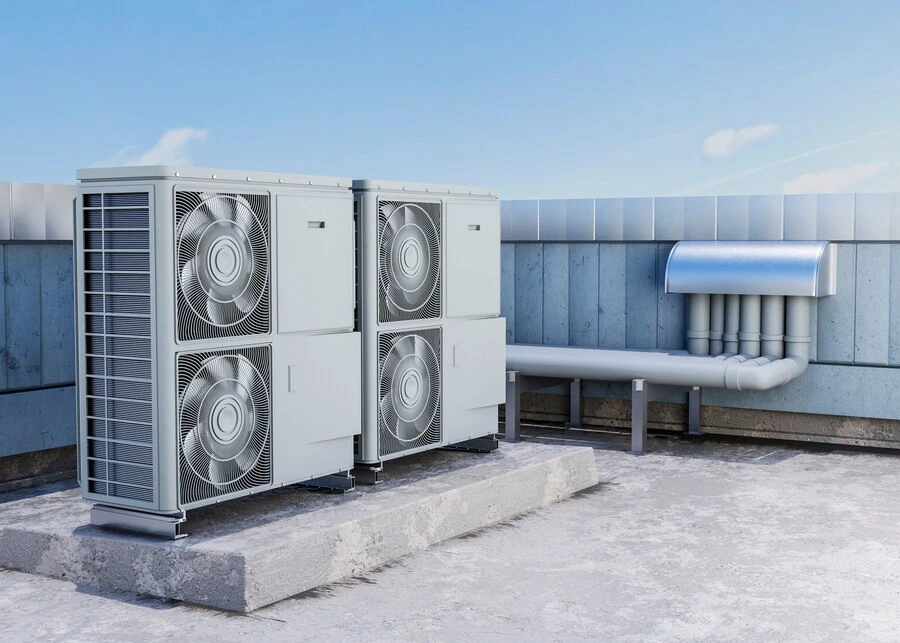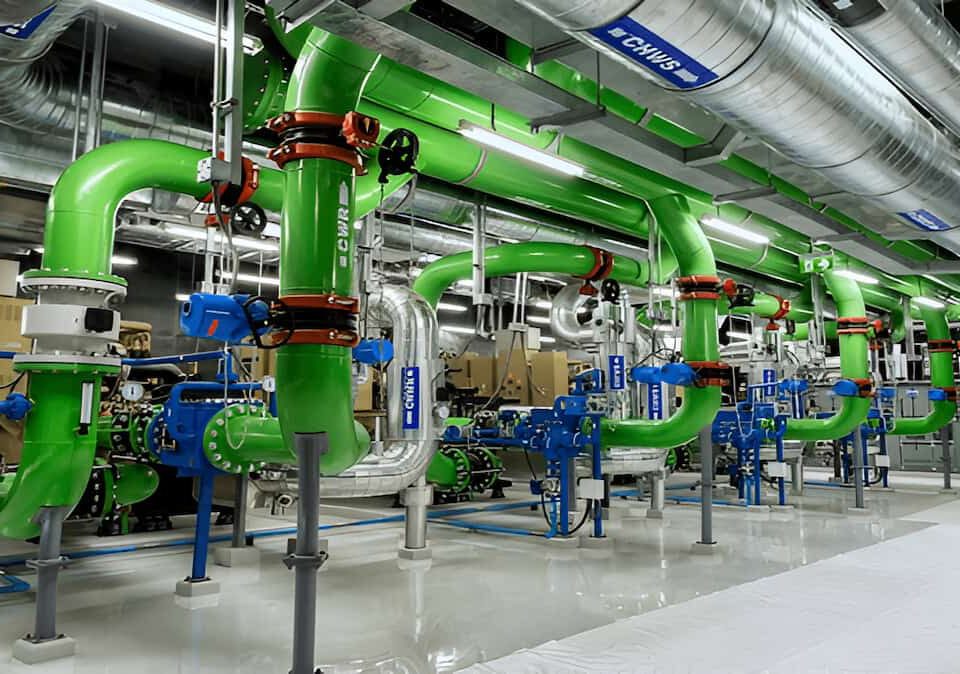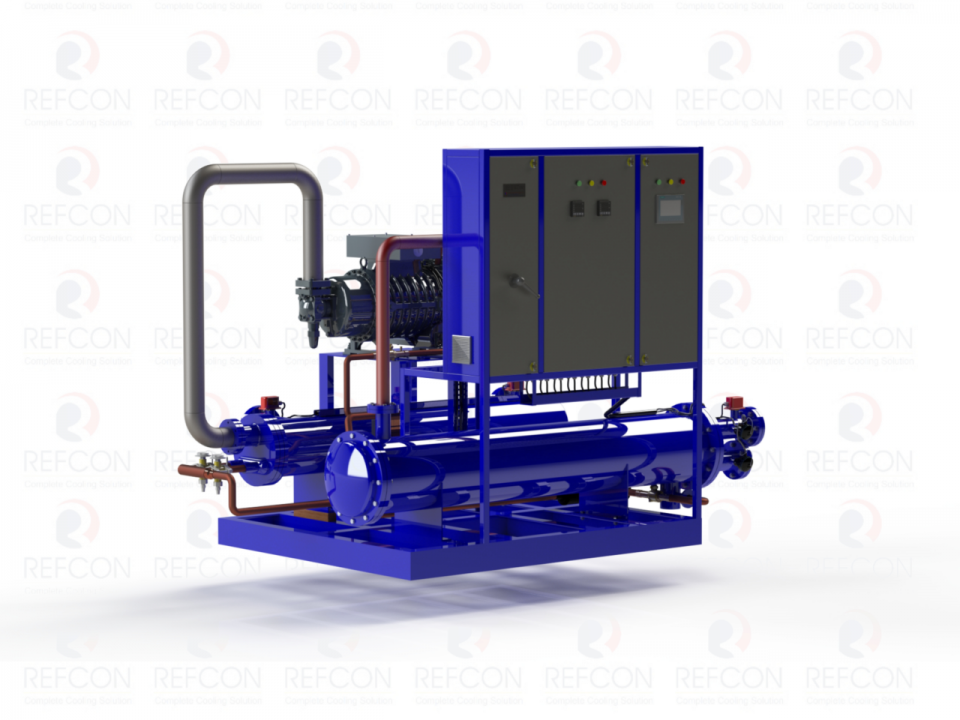How Industrial Chillers Work: Types & Performance Optimization
Industrial chilling plant systems are essential for temperature regulation in various industries. These systems ensure machinery and processes remain within safe operating temperatures. Understanding how chilling plants work and optimizing their performance is crucial for efficient operations.
Key Takeaways
- Industrial chilling plant systems are crucial for temperature control, preventing machinery from overheating, and maintaining safe operating conditions.
- Chilling plants include air-cooled, water-cooled, and absorption chillers, offering various cooling options to suit different industry requirements.
- Regular maintenance, energy monitoring, and load management enhance chiller efficiency, reducing energy consumption and operational costs.
- Partnering with reliable chiller manufacturers ensures long-term performance, robust support, and customized solutions for your specific cooling needs.
What is an Industrial Chiller?
An industrial chiller is a device designed to remove heat from a liquid through a refrigeration cycle. The cooled liquid is then circulated to cool equipment, products, or processes. Chiller manufacturers provide a variety of solutions based on industry needs.
Types of Industrial Chillers
Industrial chillers are categorized based on their cooling mechanism and condenser type. The main types include:
1. Air-Cooled Chillers
- Using ambient air to remove heat makes them a cost-effective solution for businesses in regions with cooler climates and minimal temperature fluctuations.
- It is ideal for smaller applications such as data centers, small manufacturing units, and commercial buildings where space and cooling demands are limited.
- Easier to install and maintain due to their simple design, eliminating the need for additional infrastructure like cooling towers.
- Preferred where water supply is limited, reducing water consumption and associated costs while remaining environmentally friendly.
2. Water-Cooled Chillers
- Water from a cooling tower removes heat, offering efficient cooling in high-demand applications like large industrial plants, hospitals, and hotels.
- Suitable for large applications where continuous operation and substantial cooling are required, ensuring stable and reliable performance.
- More energy-efficient in continuous operation, particularly in locations with high ambient temperatures, as water has a higher heat capacity than air, leading to improved energy savings.
Components of an Industrial Chiller
Chilling plants consist of several components that work together for efficient cooling:
- Compressor: Compresses refrigerant to increase its pressure and temperature. It acts as the system’s heart, providing the necessary force to circulate refrigerant efficiently.
- Condenser: This device releases heat absorbed by the refrigerant. It plays a crucial role in transforming the refrigerant gas into a liquid by dissipating heat into the air or water.
- Evaporator: Absorbs heat from the process fluid. The evaporator takes heat from the fluid and transfers it to the refrigerant, helping the fluid cool down to the right temperature.
- Expansion Valve: This valve regulates refrigerant flow. It makes sure the right amount of refrigerant flows into the evaporator, helping to control pressure and temperature for better cooling.
Step-by-Step Process of How Industrial Chillers Work
The process involves a continuous refrigeration cycle, broken down into the following steps:
Step 1: Compression
- The compressor compresses the refrigerant gas, raising its temperature and pressure significantly.
- This high-pressure gas moves efficiently through the system, facilitating the heat transfer.
- Compressors are available in various types, including reciprocating, centrifugal, and screw compressors, each suited for specific applications.
Step 2: Condensation
- The refrigerant passes through the condenser, where heat is removed from the refrigerant gas.
- Heat is released to air (in air-cooled chillers) or water (in water-cooled chillers).
- This process changes the refrigerant gas into a high-pressure liquid, improving energy efficiency.
Step 3: Expansion
- The cooled refrigerant passes through the expansion valve, which controls its pressure and temperature.
- By reducing the pressure, the refrigerant expands and cools down significantly.
- Proper expansion ensures efficient heat absorption in the next step, maintaining effective cooling.
Step 4: Evaporation
- The refrigerant enters the evaporator, where it absorbs heat from the process fluid, cooling it down.
- The heat transfer occurs as the refrigerant evaporates back into a gas.
- This cooled fluid is circulated through the system, maintaining the desired temperature.
Step 5: Cycle Repetition
- The refrigerant, now in its gaseous state, returns to the compressor to repeat the cycle.
- This continuous process ensures consistent cooling performance.
- Efficient monitoring and maintenance of this cycle can extend the life of the industrial chilling plant and optimize energy use.
Factors Affecting Chiller Performance
To ensure an industrial chilling plant operates efficiently, consider the following factors:
- Load Management: Match chiller capacity to the application’s cooling needs, ensuring optimal energy consumption and avoiding unnecessary operational costs. Inadequate load management can cause the chiller to overwork, leading to system breakdowns and higher electricity bills. Advanced load management systems can adjust chiller operations based on real-time demand.
- Regular Maintenance: Clean condenser coils and check refrigerant levels to maintain peak efficiency and prevent system breakdowns. Implementing a routine maintenance schedule ensures that minor issues are addressed promptly. Maintenance includes inspecting for refrigerant leaks, lubricating motors, and checking electrical connections for safe operation.
- Water Quality: Maintain water treatment to prevent scaling and corrosion in water-cooled chillers, extending the lifespan of the equipment. Poor water quality can lead to fouling in the heat exchanger, reducing heat transfer efficiency. Using chemical treatments and filtration systems can prevent deposits and ensure smooth operation.
- Ambient Temperature: Ensure proper ventilation for air-cooled chillers to maximize heat dissipation and maintain consistent performance. Chillers operating in excessively hot environments may struggle to release heat, leading to reduced cooling efficiency. Installing shade structures or using ventilation systems can mitigate this problem.
- Energy Monitoring: Track energy consumption to detect inefficiencies and implement energy-saving measures, reducing operational expenses. Installing energy management systems allows operators to analyze usage patterns, set benchmarks, and identify underperforming equipment. Periodic energy audits can also uncover opportunities for further savings and operational improvements.
Tips for Chiller Performance Optimization
- Maintain Proper Refrigerant Levels: Low refrigerant reduces cooling efficiency, increases energy consumption and system strain. Regularly inspect for refrigerant leaks and ensure proper levels. Consult chiller manufacturers for suitable refrigerant options and professional maintenance support to avoid unexpected breakdowns.
- Clean Heat Exchangers: Dirty heat exchangers limit heat transfer, reducing overall cooling capacity and increasing operational costs. Perform routine cleaning to remove dirt, scale, and debris. Ensure water-cooled chillers have clean condenser tubes. Partnering with experienced service providers ensures the effective cleaning of components.
- Inspect and Calibrate Controls: Ensure sensors and controllers work accurately to maintain desired temperature levels and optimize performance. Calibration checks ensure the data accuracy of temperature, pressure, and flow sensors. Regular updates to control systems and software upgrades recommended by chiller manufacturers can further enhance system efficiency.
- Monitor Pressure and Temperature: Detect abnormal readings to prevent downtime, allowing for prompt maintenance and repairs. Use advanced monitoring systems that provide real-time data on chiller performance. Install automated alerts for sudden pressure or temperature deviations, preventing damage to the industrial chilling plant.
- Upgrade to Energy-Efficient Models: Modern chillers are more energy-efficient and environmentally friendly, reducing energy consumption and carbon emissions. Chilling plants with energy-efficient systems often qualify for energy rebates and incentives. When considering upgrades to high-efficiency models, evaluate long-term savings and environmental benefits.
Why Choose Reliable Chiller Manufacturers?
Choosing the right chiller manufacturers ensures longevity and reliable performance. Reputable manufacturers provide high-quality components, reliable after-sales support, and customization options to suit your needs. They provide expert help in choosing the right chiller model to ensure it saves energy and fits smoothly into your operations.
Also, certified manufacturers often provide training and technical support, ensuring operators can maintain and troubleshoot the systems effectively. Partnering with experienced manufacturers reduces downtime and enhances the overall productivity of your industrial chilling plant. Using trustworthy equipment helps meet industry rules and environmental laws, making operations more sustainable and cost-effective.
Conclusion
Efficient cooling is vital for industrial processes. A proper understanding of how industrial chilling plant systems work is essential for achieving optimal performance. Following best practices for performance optimization will maximize efficiency and reduce operational costs. Refcon Chillers offers advanced and reliable cooling solutions tailored to meet the needs of various industries. Our industrial chillers are designed for maximum efficiency, durability, and consistent performance.
Refcon Chillers offers after-sales support, expert advice, and customizable designs to provide high-quality systems to clients. Partnering with Refcon guarantees operational stability, minimized downtime, and long-term cost savings. Thus, making them a preferred choice among businesses seeking dependable cooling solutions.
Contact Refcon Chillers today to discuss your industrial cooling needs and explore how their solutions can enhance your operations.






